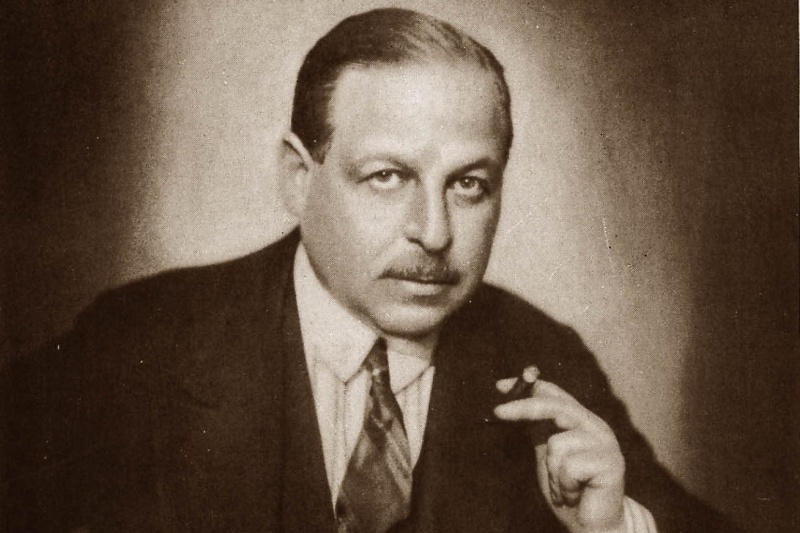
Operettas by Imre Kálmán, the most outstanding representative of the silver Viennese operetta next to Ferenc Lehár, have been performed regularly around the world for almost a century. His two greatest works, full of characteristic Hungarian music - Csárdás Princess and Countess Marica - were hugely successful. Kálmán's life has been the subject of many films (including The King of Csárdás from 1958 by the German director Harald Philipp). The composer has been commemorated in museums and through a dozens of monuments. His works have been adapted for many films.
Imre Kálmán was born on 24 October 1882 in Siófok as Imre Koppstein. His father, Károly Koppstein was a trader and his mother, Paula Singer was a singer. Imre was born as the third child in the family. He had five siblings. As is usually the case with brilliant composers, he began showing musical talent at a very young age. Since childhood he has been exceptionally interested in theatrical plays, which is why he was a frequent guest of the summer theatre in Siófok. He wanted very much to become a professional concert pianist, so he bought a piano at the age of sixteen for the money he saved (today we can admire this instrument in a museum dedicated to the composer, located in his hometown). Unfortunately, he had to give up these plans due to chronic nerve inflammation, which made it practically impossible for him to play the piano efficiently. This disease had a decisive impact on his whole life - Imre focused on composing instead of playing.
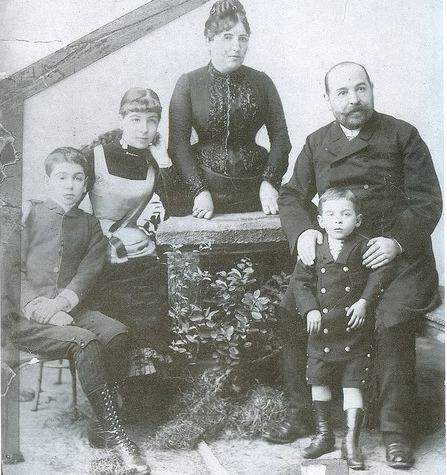
Koppstein family photograph. From left to right: Imre's older brother (Béla 1875-1915) and sister Vilma (1874-1953), his mother Paula Singer (1853-1933), father Károly Koppstein (1850-1921), and little Imre in his arms. The photograph was taken before the birth of the composer's younger sisters – Rózsa (1888-1972), Emilia (1891-1944) and Ilona (1892-1944).

Imre Kálmán's piano in a museum in Siófok.
He attended the famous Fasori Gimnázium in Budapest. During his studies at this grammar school he changed his name to Kálmán. Then in 1900 he joined a composition class taught by professor János Koessler (author of more than 130 works, including two symphonies and an opera) at the Royal Hungarian National Academy of Music. He was not the only famous student of this outstanding teacher, Koessler's other students included Bela Bartók and Zoltan Kodály, as well as future operetta composers Albert Szirmai and Viktor Jacobi. Imre also read law for some time. After graduation, he wrote as a music critic for the Pesti napló magazine, making his debut as a composer of instrumental and vocal works. During this period he wrote, among others: symphonic poems Endre és Johann in 1905 and Saturnalia in 1904, Scherzando for string orchestra, a song cycle, a sonata for piano and a cycle of piano pieces for children. He also composed the piece Farewell to Mikes for choir and orchestra, as well as a musical comedy with lyrics based on Sam Fényes' work The Heirs of Pereszlena, whose premiere proved to be a failure and the composition was staged only six times before disappearing from posters.
The growing popularity of operettas and the rather moderate successes of his early compositions convinced Kálmán to compose his first work of this type - the Autumn Manoeuvres operetta (apart from the Hungarian version, i.e. Tatárajárás, it was also performed in German under the title Ein Herbstmanöver and in English under the title The Gay Hussars and Autumn Manoeuvres) from 1908. Hungarian librettists Karl von Bakonyi and Andor Gábor wrote the libretto to the original Hungarian version of the operetta. The plot of the operetta tells the story of a Hungarian hussar officer Lörenthy, who during his autumn military manoeuvres found himself near a castle once belonging to his ancestors. Today, the castle is owned by Baroness Riza, who inherited it after the death of her husband, Baron von Marbach. A Hussar lieutenant once fell in love with her, the love was reciprocated, but she nevertheless married the aforementioned influential baron. During a ball at the castle, the unit quartered in barracks fails. Lörenthy takes responsibility for these events. In spite of the many adversities, everything finally works out: Lörenthy marries her beloved baroness, accepting his family castle as her dowry. This work was extremely successful not only in Europe (the operetta was performed 265 times in Vienna alone) but also in the United States. After this success, which was a kind of a harbinger of his brilliant career, the young composer left for Vienna, where he made a home.
Valse lento from the operetta The Disaster of the Tatars performed by the Hungarian Radio and Television Symphony Orchestra. Conductor: László Makláry.
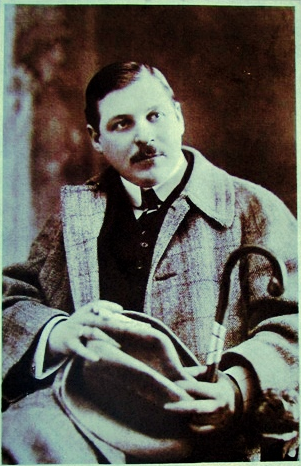
Young Imre Kálmán. Photograph taken in 1909.
His second operetta, the Veteran, had its premiere in 1910. The libretto for this piece was written by Károly von Bakonyi, attributed with the operetta's failure – critics in their reviews pointed out poor quality of the text. A year later, in Vienna in 1911, her German-language version of Der gute Kamerad was exhibited, corrected by Victor Léon himself, Ferenc Lehár's famous collaborator. As it turned out, even the intervention of this outstanding librettist did not help and the piece soon disappeared from the repertoire of musical theatres. A year later, on 11 October 1912, the King of the Fiddlers had its premiere at the Johann-Strauss Theatre in Vienna. It was a very successful piece and at the same time the first operetta by this composer written especially for the Viennese audience. This work, full of characteristic Viennese music, contained a libretto by Juliusz Wilhelm and Fritz Grünbaum, describing the history of the gypsy violinist. The inspiration for this text was the story of a true violinist and composer Pali Ráč, who lived between 1815 and 1885. Shortly after the premiere, the operetta reached a dizzying 300 performances and, like the debut Autumn Manners, was soon popular throughout Europe and the United States. Critics appreciated the King of the Fiddlers very much, pointing to the brilliant and extremely melodic musical layer of the work and freshness of the whole.
The Village Children Waltz based on melodies from the operetta King of the Fiddlers from 1912, in an excellent performance by the Berlin Symphony Orchestra under the baton of the famous conductor and composer Robert Stolz. The waltz contains, among others, a beautiful melody from the O komm mit mir, ich tanz mit dir ins Himmelreich hinein (Oh come with me, I will dance with you all the way to paradise) aria.
Kálmán continued to compose until the First World War, finishing two operettas that are forgotten today in 1912: The Blue House was performed in London at the end of October 1912 and the Little King in Vienna a month later. Unfortunately, the climate in Vienna changed dramatically with the start of the Great War. Many theatres in Europe, including Vienna, were temporarily closed. With the planned reopening of the Theatre an der Wien in autumn 1914, Kálmán stopped working on new operettas and reworked one of his earlier works, The Veteran. He added new music to the operetta, changed the characters and added a happy ending, making the operetta more accessible to those who endured the horrible, difficult time of war. Performed under a new title Gold gab ich für Eisen (I swapped gold for iron) was a refreshed version of a not very popular work, and just like the prototype, it was only a minor success.
In 1915 Kálmán went to Bad Ischl, a place very popular among artists, with the intention of finishing the operetta The Csárdás Princess. The same year he received the tragic news of the death of his older brother, Béla. This loss in Kálmán's life was the first of many he was to suffer in the future. Prior to finishing The Csárdás Princess, Kálmán composed his Hungarian operetta Zsuzsi kisasszony, which had its premiere in early 1915. The titular Zsuzsi is a country girl who escapes to Budapest with the famous singer Falsetti. Soon, however, she come to her senses and came back to her family home to live with her beloved again. It is interesting to note that this operetta has come straight to Broadway instead of following the traditional route through European capitals.
On 17 November 1915, the moment long awaited by the composer came, with the premiere at the Johann-Strauss Theatre in Vienna of the operetta The Csárdás Princess -magnum opus Imre Kálmán with a libretto by Leo Stein and Béla Jenbach. This is undoubtedly one of the most successful operettas of all time. The operetta libretto describes the story of Sylvia Varescu, the titular csárdás princess, a well-known cabaret singer in love with Prince Edwin von Lippert-Weylersheim. Edwin reciprocates Sylvia's feelings and is planning to marry her. However, his parents do not want to agree to the prince's wedding with the titular chancellor because he has been engaged to the Countess Stasi for several years. Despite various adversities, the whole story ends happily for the couple in love. This operetta has spread around the world at an exponential rate. It was staged over 500 times at the Vienna theatre itself, which was extremely lucky for operetta composers (it was there that the famous Paganini operetta by Ferenc Lehár, many works by Richard von Goldberger and the aforementioned King of the Fiddlers premiered). A number of versions of this operetta were created and it is still very popular today.
Recording of the entire Polish version of the three-act Csárdás Princess operetta, the most outstanding work by Imre Kálmán performed by the Cracow Opera Orchestra under the baton of Tomasz Lida. Bożena Zawiślak-Dolny plays the title role of the princess of csárdás.
.
Over the next seven years Kálmán composed only two operettas, but both were very well received by the audience. A Girl From the Netherlands from 1920 and Bajadera were shown a year later in the Carl-Theatre in Vienna. Bajadera initiated a long and fruitful cooperation with libretto authors Julius Brammer and Alfred Grünwald, who used a converted libretto from the famous Beggar's Student operetta by Karl Millöcker. Kálmán will compose five operettas in cooperation with these two, including some of his most successful works: Countess Marica, The Circus Princess, The Duchess of Chicago and Violet of Montrmarte.
In 1924, the second most outstanding operetta by Kálmán, Countess Marica, was premiered. The operetta debuted on 28 February at the Theatre an der Wien. The premiere was a huge success for the composer. Countess Marica still enjoys the same appreciation of the audience, bewitching with the beauty of the melody, wonderful orchestration, a multitude of love intrigues and a great libretto. A rich beauty, Marica arrives at her long-lost mansion in Hungary. To get rid of intrusive suitors, she announces her engagement to Koloman Zsupán. Her chosen one will not be able to attend the party Marica is giving on this occasion, for a simple reason - the man was a figment of her imagination. Marica took on the name of an imaginary man from the famous operetta The Gypsy Baron by Johann Strauss II. Meanwhile, at the engagement party, a fiancé appears unexpectedly, the aforementioned Baron Koloman - a wealthy landowner from Varaždin, who, having learned about the whole matter from the newspaper, came to take advantage of an unusual opportunity... Almost every fragment of this masterpiece, from the overture, through the famous duo of Marica and Żupan Ah, go to Varaždin to the finale, has become a great hit.
Overture to Countess Marica operetta performed by Symphonie Orchester Graunke. Conductor: Willy Mattes
The famous duo of Marica and Żupan Ah, go to Varaždin from Countess Marica's operetta performed by Iwona Tober, Dariusz Stachura and Kraków Obligato Strauss Orchestra. Conductor: Jerzy Sobeńko.
The subsequent years were very busy for Kálmán. The premiere of the well-received Circus Princess took place in Vienna in 1926, and two years later the Duchess of Chicago operetta was performed. The music layer of the latter work was composed largely under the influence of jazz, a genre that originated in the early 20th century in New Orleans, a city in the south of the United States. With its lightness, it was well received by the audience, achieving an impressive result of 372 performances.
A bundle of works from the Duchess of Chicago operetta performed by the Ballroom Orchestra conducted by Zdenek Machacek.
In 1930, a not very successful operetta by Violet of Montrmarte premiered. The influence of Ferenc Lehár's work can be seen in this work, which at the end of the 1920s began to compose works of a serious and dramatic character (such as Fryderyka from 1928). In 1931 Kálmán wrote the music for his first and only film operetta, Ronna, which was very popular in Germany, Austria, France and the United States. A year later, another operetta The Devil's Rider, with a libretto by famous Berlin librettists Rudolf Schantzer and Ernst Welisch, premiered. The action of the operetta, set in nineteenth-century Vienna and Pressburg, concerns the story of a Hungarian officer, Count Sandor, in love with the daughter of his rival, Prince Metternich. The woman reciprocates Sandor's feelings, but her father wants the girl to be married off to the son of the Duke of Monaco, Duke Karl, who in turn is in love with a dancer... The premiere of The Devil's Rider took place in March 1932 on the stage of Theatre an der Wien and it was Kalman's last Viennese premiere.
Polish language version of Sandor's Aria from the operetta The Devil's Rider performed by Hubert Stolarski at the State Theatre of Musical Comedy in St. Petersburg.
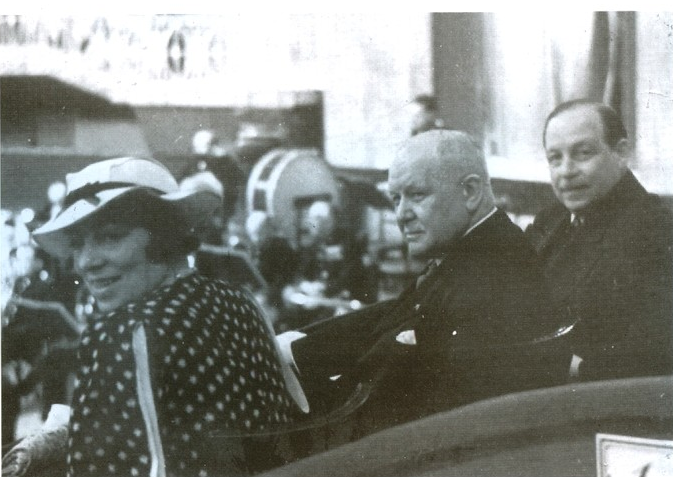
Two giants of the operetta: Imre Kálmán together with Ferenc Lehar. Photograph taken in Vienna in 1932.
Over the next few years, due to growing political tension in Europe, Kálmán's compositional activity slowed down. The premiere of his next operetta, the unsuccessful Empress Josephine, took place on 18 January 1936 in Zurich. The infamous anti-Jewish Nuremberg Laws, passed a year earlier by the German Reichstag, closed the possibility for Kálmán to perform his works on German stages. After Austria's Anschluss to the Third Reich, having rejected the authorities' offer to consider him an "honorary Aryan", Kalman emigrated to Paris in 1938 and two years later left for the United States, where he settled for a short time in Manhattan. He then moved to Los Angeles, where he made contracts for film versions of several of his operettas. Soon he returned to New York, where he conducted his songs during live concerts and radio broadcasts. During his stay in the country, Kálmán met such composers as Erich Wolfgang Korngold and Oscar Straus, author of the famous operetta The Charm of the Waltz.
In 1943 Imre Kálmán collaborated with the famous librettist Lorenz Hart and Paul Gallico on the operetta Miss Underground, which was never produced due to Hart's premature death. In 1945 the Hungarian composer received terrible news from Europe - his two younger sisters, Ilona and Emilia, were deported and murdered in concentration camps. The devastating news resulted in his first heart attack. Soon he recovered and resumed composing. The same year New York saw the premiere of the Marinka operetta, which remained on the poster for five months. It is worth mentioning that during his stay in the United States, this outstanding and internationally acclaimed Hungarian composer received two honorary doctorates: at the New York College of Music and Columbia University.
In 1948 he returned to the Old Continent and settled in Paris. He then stayed in Vienna to settle in Paris again in 1951. Imre Kálmán did not live to see the premiere of his last Arizona Lady operetta. He died in the French capital on 30 October 1953. After his death, the operetta was completed by his son Charles (1929-2015), who inherited his father's compositional talent. The brilliant Imre Kálmán was buried at the Central Cemetery in Vienna, the resting place of other classical music giants, such as the Baroque, the Baroque, the Baroque, and the Baroque. Ludwig van Beethoven, Johannes Brahms, Christoph Willibald Ritter von Gluck, Robert Stolz and Johann Strauss II.
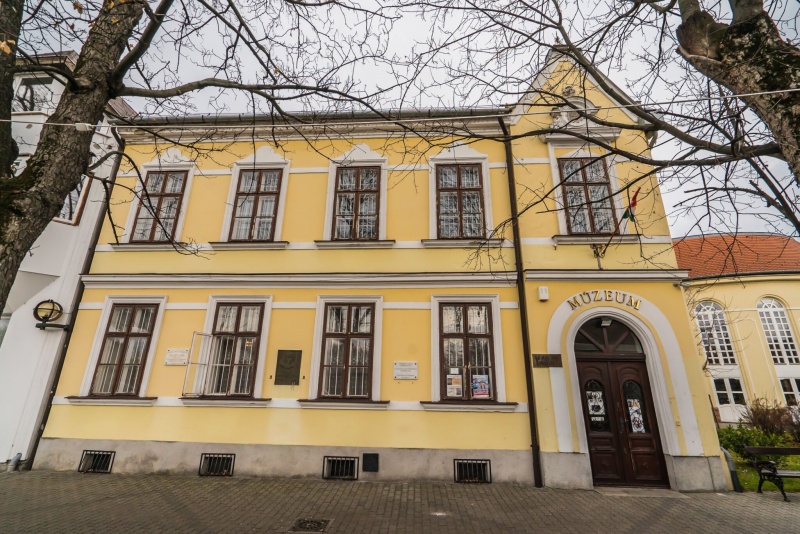
The Imre Kálmán Museum building located in the composer's hometown of Siófok, on the southern bank of the Balaton.
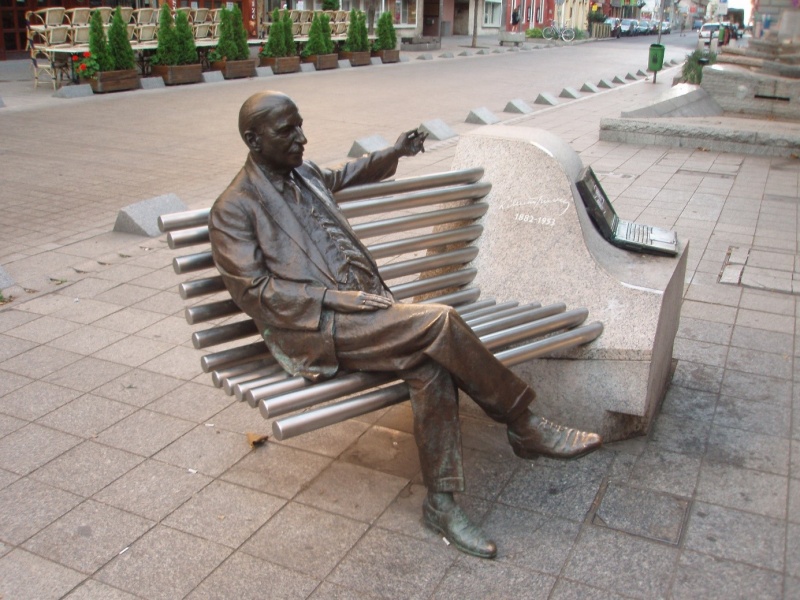
Monument of Imre Kálmán in Siófok, by the Hungarian sculptor Gábor Veres, located in Nagymező Street in Budapest. The monument was unveiled on October 20, 2007 in front of the Budapest Operetta Theatre to commemorate the composer's 125th birthday anniversary.
The development of Imre Kálman's compositional style can be divided into three periods. His earliest stage works were influenced by Gypsy folklore and traditional Hungarian music. After settling permanently in Vienna, he immediately adapted to the standards of the Viennese operetta, established before him by such masters as Johann Strauss II, Franz von Suppé, Richard Heuberger Carl Michael Ziehrer or Ferenc Lehár (it was the giant success of Lehár's Merry Widow that made the young Imre interested in the operetta). In the early 1920s, he took an interest in American culture, especially jazz. His inspiration for this genre was evident in many of his later operettas (including the Duchess of Chicago and the Arizona Lady, completed after the composer's death). However, all his most successful operetta works contained numerous Hungarian elements. Even in his latest Arizona Lady operetta, whose action takes place at an Arizona ranch in the 1920s, the main character of the work Lona Farrell is of Hungarian origin.
The Song of the Prairie from the first act of the Arizona Lady operetta performed by Orchester des Bayerischen Rundfunks and Werner Schmidt-Boelcke, Mada Rahl, Fritz Rasp, Ernst Fürbringer, Herbert Groh and Brigitte Mira.
Kálman used the entire sound potential of the orchestra, often adding musical instruments, less frequently found in operettas, to highlight the character of the work, such as celestas, tam-tams, cimbaloms or a banjo and the traditional Hungarian wind instrument tárogátó, a kind of clarinet. The latter instrument, mentioned by sources from the 15th century, was a specific symbol of the Hungarian aristocracy and at the same time a symbol of the anti-Habsburg uprising for Hungarian independence in 1703-1711. The leader of this failed insurgency was the magnate and then Prince of Transylvania, Francis II Rakoczy, appointed Prince of Hungary in 1705. Due to the symbolic, anti-Habsburg significance of the instrument, its use was prohibited by the authorities.
Many of Kálman's works from his first operetta, The Disaster of the Tartars contains a csárdás, which in the 1830s began to replace the verbunkos-style as the main Hungarian national dance, popular among all social classes. Soon it was widely used by composers such as Leo Delibes (Coppelia), Alexander Glazunov (Raymonda) or Johann Strauss II (Cinderella, The Revenge of the Bat) in ballets and operettas, both as a characteristic dance and a dance-like stylized musical form. One of the most outstanding csárdás composed by Kálmán is the one included in the finale of the first act of Countess Marica operetta, where he performs in the form of a beautiful aria sung by the title character.
Csárdás from the first act of Countess Marica operetta performed by Barbara Nieman.
Even when the composer did not compose characteristic Hungarian musical dance forms, he did not avoid saturating his music with a distinctively Hungarian sound. During his youth in Siófok and his student years in Budapest he met the extremely popular Viennese operetta every day. Every composer creating in this genre had to understand that the audience is obsessed with the waltz, and if a light stage work is to succeed, it must include this musical dance form. Imre Kálmán was an extremely versatile and creative composer, but the common point of practically all Imre Kálmán's operettas was the traditional Viennese waltz. .
Waltz from the second act of the Csárdás Princess operetta in a splendid performance by the Philharmonia Hungarica under the baton of the outstanding Hungarian conductor and composer Antal Doráti.
In addition to the waltz and the aforementioned csárdás, Kálmán also made use of the popular marches and the traditional raised dance of the Hungarian aristocracy - palotás, which flourished in the 19th century thanks to the work of eminent Hungarian composers such as Zoltán Kodály, Ferenc Erkel (the famous palotás from the third act of Hunyadi László's opera from 1844) and Márk Rózsavölgyi. In the first half of the 20th century palotás was used with great success by Hungarian operetta composers. Ferenc Lehár used it, among other things, in the finale of act I of his extremely Hungarian operetta Skylark. Imre Kálmán made use of it in act III of the operetta The Devil's Rider.
Grand Palotás de la Reine from the third act of the operetta The Devil's Rider by Imre Kalman, performed by Staatskapelle Dresden under the baton of Christian Thielemann.
Adam Bielecki
translation: Marek Parypa
Bibliography:
- Grun, B., Dzieje operetki, Polskie Wydawnictwo Muzyczne, Kraków 1974
- Kydryński, L., Przewodnik operetkowy, Polskie Wydawnictwo Muzyczne, Kraków 1984
- Kydryński, L., Usta milczą dusza śpiewa. Opowieść o życiu i twórczości Franciszka Lehára. Wydawnictwo Radia i Telewizji, Warsaw 1992
- Melitz, M., Przewodnik po operetkach, Globus Publishing House, Berlin 1917
- Traubner, R., Operetta: A Theatrical History, Routledge, 2003
- http://emlekhaz.konyvtar-siofok.hu/?p=the-biography-of-emmerich-kalman
- http://www.musiques-regenerees.fr/GhettosCamps/Kulturbund/KalmanEmmerich/KalmanEmmerich.html
- https://www.josef-weinberger.com/operas-operetta/opera/teufelsreiter-der.html
